16 Nights / 17 Days
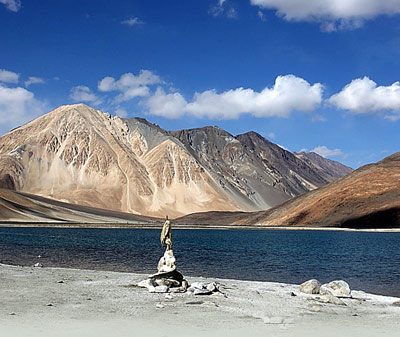
Upon arrival at Leh Airport you will met by Mountain trails representative and Welcome in traditional Ladakhi style and transfer to our pre-arranged hotel, rest of the day at leisure to acclimatize. Overnight stay at hotel
Leh City: The capital of Ladakh, at one time was a major stop on the Asian “Silk Route”. A stroll along the main bazar, observing the varied crowd and peering into the curio shops, is an entrancing experience. Chang Gali, behind the main bazar is less bustling but has intriguing little shops selling curios and jewelry like pearls, turquoise, coral, malachite, lapis and many other kinds of semi-precious stones, as well as curiously carved Yak-horn boxes, quaint brass locks, china or metal bowls etc.
Evening we visit Shanti Stupa A magnificent white-domed structure, The Japanese for World Peace built the Shanti Stupa, at Changspa, on the hilltop, and was inaugurated by Dalai Lama in 1985. Its state of the art work attracts a lot of tourists to Ladakh and is spectacular to watch. From there one can see the nice spectacular view of Leh town. The stupa looks best at night, when it is beautifully illuminated with glittering lights. A large number of tourists come to Ladakh every year to visit this amazing stupa.
AM: Excursion Spituk & Hall of Fame
PM: Excursion to Sankar Gompa & Leh Palace
Post breakfast we depart for AM Sightseeing tour to Spituk
Spituk monastery was built in 15th century during the reign of Grags ‘bum-lde, these new Gelug-pa monastery was built like fortress on the summit of crags. Spituk lies some 5 kms south of Leh. Nesting at the foot of the crags are the flat-topped houses which go to form the village of Spituk.
Spituk or dpe-thub mean ‘effective as an Example’ and this is thus a suitable name for the first Gelug-pa monastery in Ladakh. Inside the monastery, which includes several courtyards and temples of various sizes, has been built at different levels, following the shape of the rock.
And also visit Hall of Fame near Leh is worth a visit for every citizen. It is a glorious museum constructed by Indian army. You can see the memorabilia, eminent defence personalities with biographies, images and weapons used during Kargil war and belongings of enemy soldiers found at war site. Another section of this building is entirely dedicated to Siachen and its heroes. On display are attires, multi layered shoes to keep their feet from frost bites, their daily instruments, their day to day food mainly frozen and packed, which is heated by lighting small balls of Hexamycin tablets, as fire is difficult to ignite at a temperature dipping -30 deg to -50 deg centigrade. It is mentioned on a board that 97% of the casualties in Siachen are due to cold and terrain.
Later we drive back to hotel on time for lunch
Later in the afternoon, guided sightseeing tour visiting Sankar Gompa, located at a distance of approximately 3 km from the town of Leh. A subsidiary of the Spituk Gompa, it belongs to the Gelukpa or the Yellow Hat Sect. The monastery also serves as the official residence of the Ladakh’s head of Gelukpa Sect, known as The Kushok Bakul. There are time restrictions for visiting the Sankar Monastery of Leh Ladakh. You can also go either between 7:00 am and 10:00 am, or between 5:00 pm and 7:00 pm. These restrictions have been placed because a few of the monks, of the yellow-hat sect, attached to the monastery reside here permanently.
Leh Palace is one of the most captivating architectural ruins that attract the attention of the tourists almost immediately with its majestic setting at the edge of the Namgyal hill and overlooking the town and at once looks like a reminiscent of Lhasa’s Potala Palace. The Palace was built in the middle of the 16th century by King Singe Namgyal and still belongs to the royal family that now lives in the Stok Palace. The nine-storeyed monument is now in ruins. The palace remains locked and may be opened at request by a monk
Leh Palace is also an excellent example of the medieval Tibetan architecture. It features colossal inclined buttressed walls and protruding wooden balconies.
Overnight stay at the hotel.
Enroute visiting: Phyang, Likir, Basgo
After breakfast we drive to Phyang, located 6 kms away from the Srinagar-Leh highway and 17 km from Leh. It was built during the reign of King Jamyang Namgyal in late 15th century by lama Kunga Dragspa. Phiyang belongs to Dri-pung kagyu Order of Tibetan Buddhism. The man Assembly Hall which is now under conservation contains as main image Vairocana accompanied by Shakyamuni and various Kagyu lamas, and the walls are painted pleasingly with murals of Vajradhara and Five Dhyani Buddhas.
And we drive further to Likir, Likir gompa situated atop a windy cliff top overlooking the beautiful village of Likir, This Monastery is headed by the younger brother of Dalai Lama. According to tradition the foundation of Likir monastery goes back 11th century when it was a Bon center. But the real foundation seem to be not earlier than 15th century. On the top on roof they have newly setup a museum which contains some very old thankas brought from Tibet and the armory, coins, seals etc.
Basgo is certainly the most impressive of Ladakhi citadels despite its ruined state. Amidst the ruines of the fort there are two large temples and adjoining one of there is a small shrine. They all contains images of Maitreya in due proportion to their size. The most beautiful one is the higer one, which is known as the Chamba Lha-khang (Maitreya Temple) and which was built by Tsewang Namgyal, son of Tashi Namgyal, about the middle of 16th century.
Then we drive and cross the River Indus and reach Alchi, Ladakh’s most loved monastery. Over a century old, its wall paintings are very similar to those of the Tabo gompa in Spiti, Himachal Pradesh. Unlike other monasteries, which are usually on a cliff top or cling to a mountainside, Alchi is at ground level and is nestled in the shade of a garden.
After visiting the Alchi Monastery we check in at our Camp / Guest House for Overnight stay.
Enroute visiting Lamayuru
After break fast start early morning drive to Dha Hanu enroute visiting Lamayuru.
Lamayuru is around more further towards Leh – Kargil road. Lamayuru monastery belongs to Dripung Kagyu (Red Hat) like Phiyang. The oldest structure in Lamayuru is the Singey Lhakhang built by the founder of Alchi Lotsava Rinchen bzangpo in 11th century. Lamayuru lower ladakh its also called as sham.
Dha-Hanu, is situated at an altitude of 10000 ft. It is the Land of the “Drok-Pa “an Indo Aryan race. Only two villages Dha & Biama are open for tourists. Their cultural and religious practices are totally different from the rest of Ladakh. Bon-Chos believe in an ancient Pre-Buddhist animist religion known as “Bon-Chos”. These people abstained from bathing all their lives saying that ” If you wash your self your luck goes away” but since the last few years this practice is beginning to fade away. It has much to offer to scholars in the field of Ethnology & Social Anthropology
Overnight stay at the Guest house / tented accommodation.
Enroute visiting Ridzong
Post breakfast we check out from the camp and start our journey back to leh enroute visiting Ridzong Gompa: Rizong Gompa is known as the paradise for Meditation. Guru Padma Sambhava is believed to editated here for years. One can still find the small caves where Lamas used to meditate for years cutting themselves from the rest of the world except for a one feet square outlet window from where they accept the one time meal of the day.
Rid-zong is the most recent of the Gelug-pa foundation in Ladakh. The monastery has been built picturesquely at the head of a gorge reached by a side-valley running north from the Indus near a village Uletokpo. Rid-zong is best known as best disciplined monastery of the whole of Ladakh.
After Ridzong visit we drive back to Leh and check in at our hotel for overnight stay
Excursion to Matho, Stakna & Stok
Post breakfast we take an excursion to few more interesting monasteries of leh and start with Matho, lies 26 Kms south-east of Leh on the opposite bank of the Indus river. The monastery was founded by Lama Dugpa Dorjay in 16th century. Matho is the only Sakya-pa establishment in Ladakh.
Matho monastery is renowned mainly for its yearly festival, which takes place on the 14th and 15th of the first Tibetan month thus in late March or early April. It is known as Nag-hrang after the name of the local god (sa-bdag). Following drive to Stakna
Stakna is a small monastery, comprising the private apartment, all newly decorated in good Tibetan style, a Du-khang and the roms of monks and attendants. The Du-khang contains a silver gilt stupa, some seven feet high, set up by the present Head Lama Stakna Rinpoche. Other items of interest were the images of three Drug-pa lamas, Padma Karpo, Ngag-dbang rNam-rgyal, the stone man of Bhutan in 17th century, and of Ngag-dbang rGyal-mtshan.
After covering above two monasteries we drive back to leh and visit Stok Palace on the way, Stok lies south south of leh on the opposite side of the singe Tsangspo River. The castle was built on a hill at the end of village in about the year 1825 by king Tsespal Tondup Namgyal. In stok there is also the sacred monastery of Gurphug, a branch of Spituk Monastery. On the 9th and 10th days of the first tibeten month of the festival called the “Guru Tshechu” is held during which the monks of Spituk Monastery come to perform the sacred dances. At that time two gods make their appearance.
Excursion to Hemis, Takthok, Chemdey
Today we proceed for Indus Valley monastery tour.
We start with a visit to Gamous Hemis Gompa, This is the largest monastic foundation of Drukpa Kagyu Order of Tibetan Buddhism. Most of the other Drukpa monasteries are the branch monasteries of Hemis. It was built during early 17th century with the blessing of Lama Stagtsang Raspa (Shambunatha), by famous Namgyal dynasty king Singee Namgyal.
The two-day festival of monastic dance in June-July has raised the reputation of Hemis particularly high. The festival is dedicated to Guru Padmasambhava, popularly known as second Buddha and responsible for spreading Buddhism in the Tibetan world.
Tak-thok Monastery is situated in Sakti Village, at a distance of approximately 46 km from the town of Leh. The site where the monastery is now situated, once served as the meditation cave of Mahasidhas “Kunga Phuntsog”. The name Takthok literally means ‘rock-roof’. The monastery was so named, as both its roof as well as walls are made up of rock. Tak Thok belongs to the Nying-ma-pa sect of Buddhism, also known as the Old Order, and serves as the residence of approximately 55 lamas.
Chemday, The other monastery closely associated with Hemis is Chemday, which occupies an imposing position just to the south of Sakti village. The Du-khang contains images of stag-tshang Raspa, founder of the Hemis monastery and Chemday, and the last but one head-lama in this series of reincarnations. Behind the images are murals of Shakyamuni flanked by his two chief disciples amd bu mandalas of Kalachakra of Akshobhya.
After finishing the sightseeing tour we drive back to hotel for overnight stay.
Today we proceed for Indus Valley monastery tour With Mahabodhi Meditation Centre.
We start with a visit to Shey the ancient capital of Ladakh. The monastery here has a huge gold-gilded statue of Buddha Sakyamuni with a large silver lamp burning in front of the statue, built in the memory of King Singee Namgyal by his son lDeldan Namgyal in 1633 A.D. It is the only kind of statue made of Gold, Gilt and copper in entire Ladakh.
Then we visit Thiksey Gompa an impressive complex rising tier upon tier on a hill above the village. The monastery has a beautiful 30 m high gold-plated statue of Maitreya Buddha, the Buddha of the future is one of the most beautiful monasteries of Ladakh,.
Drive return to leh on the way visiting Mahabodhi, Mahabodhi is the only centre in Ladakh to conduct Dhamma talks and meditation programs. Situated in the center of Leh city (which is away from the main bazaar and not too noisy) daily meditation courses are conducted for the benefit and happiness of the people those who come from within and outside India. At this centre, Mahabodhi conducts yoga and meditation classes (Monday through to Saturday) throughout the summer months.
Overnight stay at the hotel
In the morning leave for Chumathang stop, which is famous for medical hot spring and people visit to this place for medical bath. From here a short drive will take you to Mahey bridge, the main checking point to enter to this new area. On the way visit Sumdah village and another 55 kms drive will take you to Tsomoriri.
The Tsomoriri Lake is a beautiful mountain bounded expanse of water, around 240 Kms. from Leh in Rupsho Valley. The Lake is located at 14,000 ft. near a small village of Korzok. Recently opened to foreigners due to the proximity of the Chinese boarder, the Changthang is a land of wilderness and magnificent landscapes. This region is characterized by high arid plains, remote villages, snow-capped peaks and beautiful high altitude azure-blue lakes, the largest being Tsomoriri at 4,500 m.
The Tsomoriri Lake is also the breeding ground for numerous species of birds, like the bar headed goose, crested grebe, the Brahmini duck (ruddy sheldrake) and the brown-headed gull. The Tsomorir Lake is 8 kms wide and 28 kms long.
Upon arrival we check in at our camp for two nights
In the morning visit Korzok village with its houses and its gompa appearing like a mirage. The few barley fields at Korzok must be among the highest cultivation in the world. In the afternoon visit around the Lake.
Dinner and overnight at the camp
The day will start with a drive to Mahey village, a picturesque village with spurting fountain and white clouds hanging upon. From there, you will proceed towards Puga Valley, famous for Butan gas. Thereafter, you will continue towards Tsokar via Polokongka pass (at 13500 ft.). After visiting the Tsokar Lake, you can also see Thugke gompa. The place is quite known for wild Asses, seen grazing and moving in flocks. From here, you will drive towards Leh. On the way, you will stop to Tanglangla pass, the second highest motorable pass in the world at 5350 m.
Upon arrival in leh check in at your pre-arranged hotel for two nights.
After an early breakfast we drive to NUBRA VALLEY leads through KHARDUNG-LA-PASS (the highest motorable road in the world) at 18,390 ft, around 39kms from Leh. From the pass, one can see all the way south over the Indus valley to seemingly endless peaks and ridges of the Zanskar range, and north to the giants of the Sase massif.
Nubra Valley is popularly known as Ldorma or the valley of flowers. It is situated to the North of Ladakh between the Karakoram and Ladakh ranges of the Himalayas. Nubra lies at and altitude of about 10,000 – ft. above the sea level and is drained largely by the Shiyok river. The Siachen river forms its single largest tributary.
First visit SUMUR, another pretty village on the other side of the river’; SAMSTANLING GOMPA here was founded by Lama Tsultims Nima and Monastic community was introduced as Rezong Gonpa. About 50 monks are residing at this 132 years old Monastery. The Gompa has some strict rules and regulations like not allowing women in the monastery after sunset and before sunrise, no smoking etc.
Our tented camp – Nubra Organic Retreat is situated in a beautiful village called HUNDAR with lot of trees. There is nothing more to see here except a small monastery and ruined fort above the village however the site for the camp is so beautiful that it will invite you to explore the village on own.
Explore Nubra Valley
After your breakfast at the camp, visit the SAND DUNES to enjoy a camel safari (Optional).
In second half of the day enjoy a visit to DISKIT MONASTERY perched on the rock overhanging the steam which is the source of the energy used by the mills. The monastery is rich, full of tangkas (skill paintings) and above all of magnificent giant statues, effigies of the Buddha and old mural paintings in which can be noted a multitude of influences.. DISKIT is the main village or headquarter of Nubra Valley, which has small market consisting of a row of shops and about 500 years old Gompa on the hilltop. DESKIT GOMPA was founded y Lama Sherab Zangpo of stod in about 1420 AD during the reign of King Dragspa. About 100 monks are residing in the Gompa, which is a branch of Thiksey Monastery. The monastic festival called Gustor takes place on 20th and 21st days of the 12th month of Tibetan calendar.
After breakfast drive to Leh over Khardung La. Afternoon rest and relax or take a walk to the local market. Overnight at hotel.
Excursion to Pangong Lake
After an early breakfast we Leave for Pangong Lake through Changla pass 5486 Mtrs. While ascending Changla pass 5486 Mtrs. Enjoy the beautiful panoramic view of the villages below the pass. After crossing the pass halt for picnic lunch at Tsoltak, the summer pastureland of the yaks. Arrive Durbuk and from there a short drive takes you to the western shore of the lake.
Pangong Lake, situated at 14,000 feet (4,267 m). A long narrow basin of inland drainage, hardly six to seven kilometer at its widest point and over 130km long, it is bisected by the international border between India and China. A few years back the government decided to open it to tourists though the lake and its surrounding is under army surveillance. The tourism department intends to develop the infrastructure and facilitate the route leading to the lake.
Enjoy the landscape in the back drop of the Lake. One rarely feels so close to nature and environment and the scenery is unforgettable. After spending some time at Pangong we drive back to hotel for overnight stay.
Complete day at leisure for own activities and Last day Shopping. Overnight stay at the hotel
Tour concludes. Mountain Trails thank you for your patronage and ensure a punctual transfer to Domestic Airport to catch the flight for your onward Destination
We are Dealing in Tour & Travels Services. Read More...
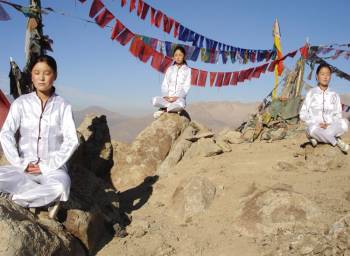 6D/5N
6D/5N
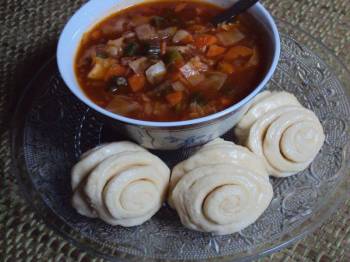 6D/5N
6D/5N
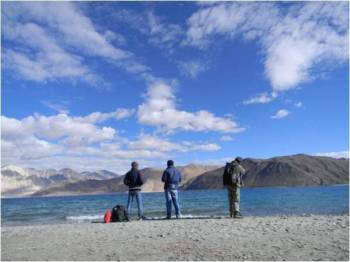 10D/9N
10D/9N
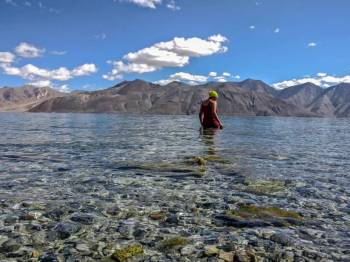 8D/7N
8D/7N
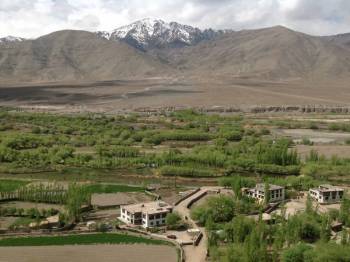 6D/5N
6D/5N
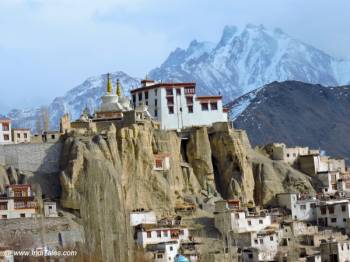 8D/7N
8D/7N
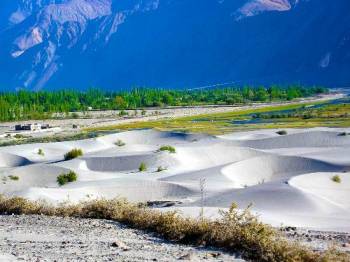 5D/4N
5D/4N
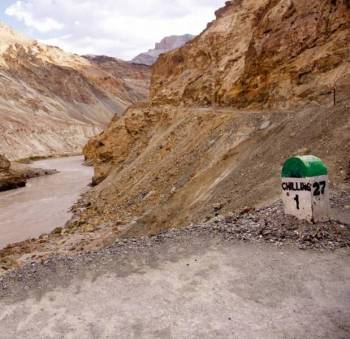 5D/4N
5D/4N
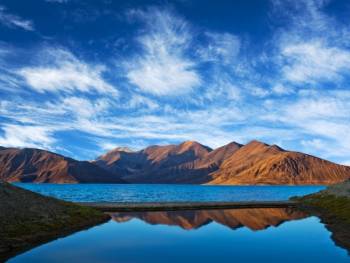 10D/9N
10D/9N
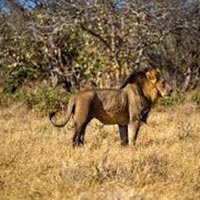 17D/16N
17D/16N
4 Countries: Kenya - Vic Falls - Botswan..
Gaborone - Nairobi - Lusaka - Dodoma
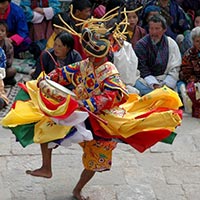 17D/16N
17D/16N
Bhutan Enchanting Tsechu-Festival Tour
Paro - Thimphu - Punakha - Wangdue Phodrang - Trongsa - Bumthang - Mongar - Trashig..
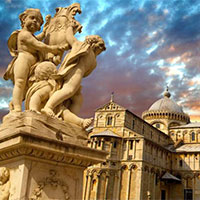 17D/16N
17D/16N
Rome - Pisa - Prato - Venice - Padova - Milan - Lugano - Engelberg - Lucerne - Colo..
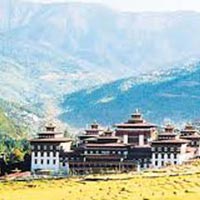 17D/16N
17D/16N
Mumbai - Rome - Pisa - Padua - Innsbruck - Salzburg - Interlaken - Geneva - Paris -..
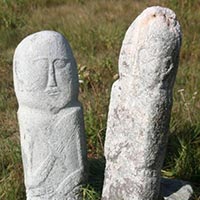 17D/16N
17D/16N
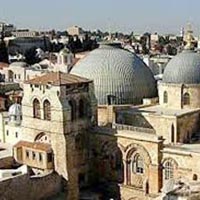 17D/16N
17D/16N
Apollonius Vacation Package: 17 Days
Ankara - Konya - Canakkale - Haifa - Acre - Nazareth - Istanbul - Istambbul - Efeso..
 17D/16N
17D/16N
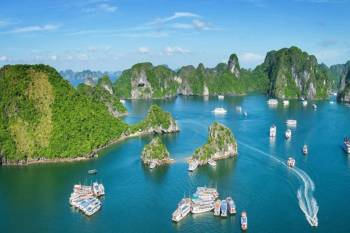 17D/16N
17D/16N
17 Days Package Tour Indochina Panorama
Hanoi - Ho Chi Minh City - Siem Reap - Luang Prabang - North Pole - Cantwell - Llan..
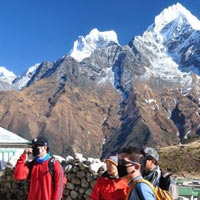 17D/16N
17D/16N
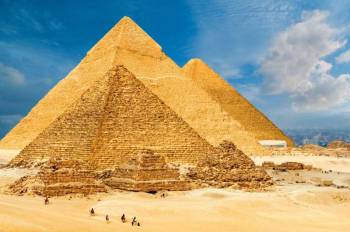 11D/10N
11D/10N
10 Nights 11 Days Holy Land Tour Of Jord..
Cairo - Amman - Nazareth - Jerusalem - Bethlehem
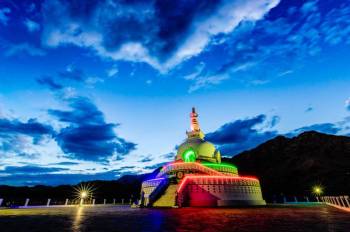 7D/6N
7D/6N
 6D/5N
6D/5N
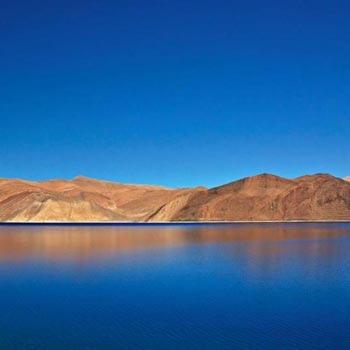 8D/7N
8D/7N
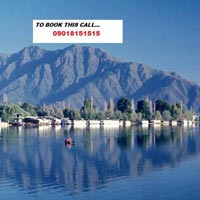 6D/5N
6D/5N
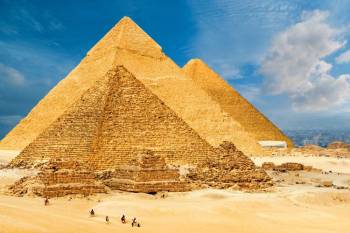 11D/10N
11D/10N
11 Days Holy Land Tour Of Jordan - Israe..
Cairo - Amman - Nazareth - Jerusalem - Bethlehem
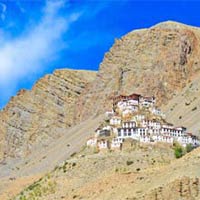 9D/8N
9D/8N
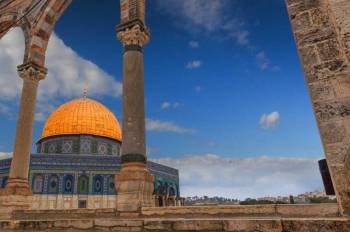 6D/5N
6D/5N
5N 6D Masjid Al Aqsa - Bait Al Muqaddas ..
Amman - Petra - Jerusalem - Wadi Rum - Bethlehem
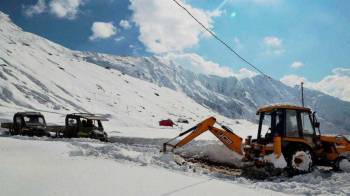 6D/5N
6D/5N